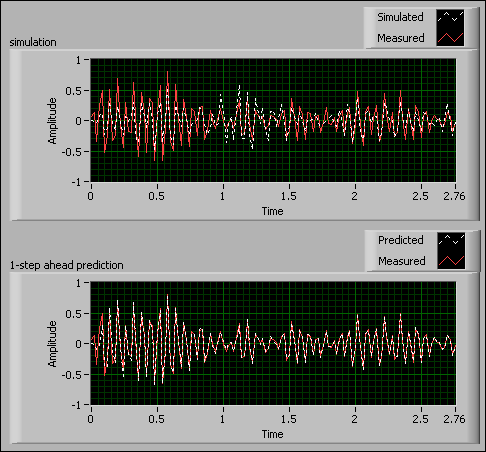Estimating and Validating a State-Space Model (System Identification Toolkit)
For a state-space model, order estimation is equivalent to estimating the number of significant singular values, which correspond to the number of states in the model. After identifying a state-space model that represents the system, you can use the same validation and verification technique used in the Simulation and Prediction section and the Residual Analysis section.
The examples in this topic use the same flexible robotic arm data and the same preprocessing techniques.
Finding the Singular Values
The following block diagram shows how to use the SI Estimate Orders of System Model VI to find the optimal order and the number of significant singular values.

The Singular Values graph in the following figure shows a singular value plot with four leading singular values.

By looking both at the Singular Values graph and the optimal order, you can see that there are four states in this state-space model.
Validating the Estimated State-Space Model
You can validate the state-space model in the same way that you validated the ARX model. You use the SI Model Simulation VI and the SI Model Prediction VI to determine the accuracy of the state-space model.
The following figure shows the complete process, from estimating the state-space model to simulating and predicting the response of the model.

The simulation and 1-step ahead prediction graphs in the previous figure show simulation and prediction plots for a state-space model.
